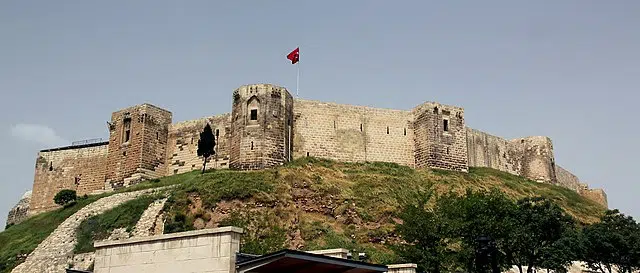
The Gaziantep Castle in Turkey, an ancient structure that stood for almost 2000 years, has been partially destroyed by the massive 7.8 magnitude earthquake that struck Turkey on February 6, 2023.
According to the Turkish state-run news agency Anadolu: “Some of the bastions in the east, south, and southeast parts of the historical Gaziantep Castle in the central Şahinbey district were destroyed by the earthquake, the debris was scattered on the road.”
The railings that encircled the castle were strewn across the walkways and the retaining wall that was located close to the castle fell down as well. Large fissures developed in a few of the bastions.
Parts of the dome and eastern wall of the famous Sirvani Mosque, which is situated right next to the castle and is said to have been constructed in the 17th century, has also been destroyed.
Construction History of Gaziantep Castle
The Romans constructed this famous monument sometime in the second or third century AD. Archaeological evidence shows that it was used as a watchtower in some capacity.
Afterward, during the reign of the Byzantine Emperor Justinian in the tenth century, it underwent renovations and assumed the appearance that it has now. To ensure that the castle continued to serve its purpose under subsequent emperors, it underwent a number of significant renovations.
The city walls were extended to the west, south, and east up to the hill, and the southern portion was outfitted with constructions in the form of arched and vaulted galleries.
The castle, in its present structure, has the shape of an asymmetrical circle. Its circumference is somewhere in the range of 1200 meters, and its diameter is somewhere in the range of 100 meters.
Gaziantep Castle is completely destroyed after today's earthquake in Turkey.
The castle was built by the Hittite Empire and later built into a main castle by the Roman Empire in 2nd and 3rd centuries AD. pic.twitter.com/6Amv0PfhNT
— Oskar Aanmoen 🇳🇴 (@OAanmoen) February 6, 2023
Before the earthquake, just 12 of the castle’s original 36 bastions were standing. The towers, gates, and walls around the courtyard serve as the core of the structure. In addition to that, it features a bath, a cistern, and a mosque where people may worship.
Later, in the year 1481, the Sultan of Egypt Qaitbay worked on it, and in the year 1557, Sultan Suleiman of the Ottoman Empire did as well.
Gaziantep Castle Served Important Emperors
The needs of the many emperors were met by the Gaziantep Castle in a variety of ways. During the time of the Byzantine empire, it played a defensive role against potential invaders and functioned as a military outpost.
After some time, under the reign of the Ottoman Empire, the castle became significant due to its role as a forum for political, military, and cultural debates. It is known to have played a vital part during the War of Independence that Turkey fought.
Even after suffering damage from a number of wars and invasions, the fortress at Gaziantep continued to perform its intended function. It was now used as a museum and an attraction for tourists.
In order to commemorate the extensive history of the castle, a variety of events, exhibits, concerts and other activities were held, which attracted guests from all over the globe.
Concerns have been raised after the collapse of the castle in Gaziantep about the possibility of further monuments being damaged by the earthquake.
See all the latest news from Greece and the world at Greekreporter.com. Contact our newsroom to report an update or send your story, photos and videos. Follow GR on Google News and subscribe here to our daily email!



